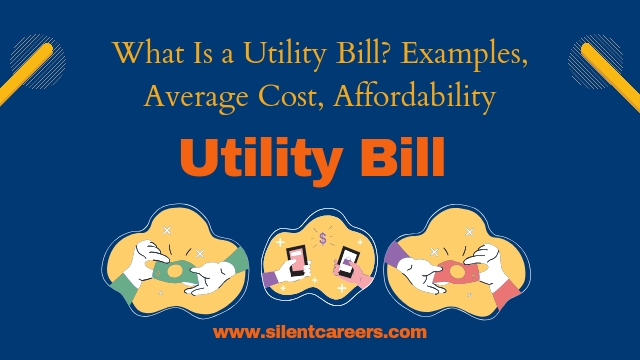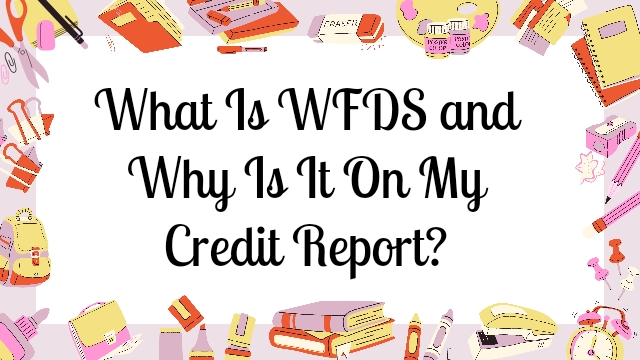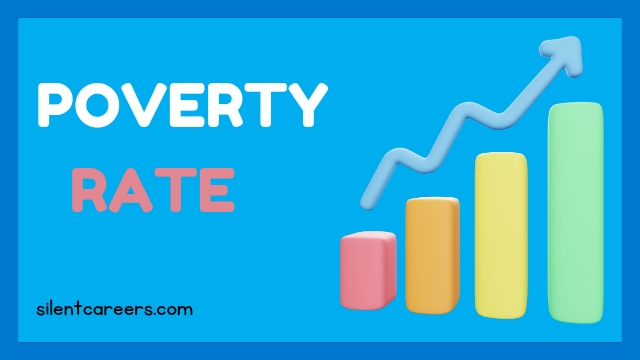
Credit score range for transunion: TransUnion’s credit score range typically spans from 300 to 850. A higher score indicates better creditworthiness, with scores above 700 generally considered good, above 750 excellent, and scores below 600 often seen as poor.

What is the credit score range for Transunion?
TransUnion’s credit score range typically spans from 300 to 850. Here’s a breakdown:
- Excellent: 750-850
- Good: 700-749
- Fair: 650-699
- Poor: 600-649
- Very Poor: 300-599
Higher scores indicate better creditworthiness, which can impact your ability to obtain loans and favorable interest rates.
Understanding credit score ranges
Understanding credit score ranges is essential for managing your financial health. Credit scores are numerical representations of your creditworthiness and are used by lenders to assess the risk of lending to you. Here’s a breakdown of the common credit score ranges used by FICO and VantageScore, the two major credit scoring models:
FICO Score Ranges
- Excellent (800-850)
- Represents the highest level of creditworthiness.
- Borrowers are likely to receive the best interest rates and loan terms.
- Very Good (740-799)
- Indicates strong credit history.
- Borrowers generally receive favorable interest rates and loan terms.
- Good (670-739)
- Shows a solid credit history with few delinquencies.
- Borrowers are considered low risk and typically receive good loan terms.
- Fair (580-669)
- Reflects some past credit issues or a shorter credit history.
- Borrowers may face higher interest rates and more scrutiny from lenders.
- Poor (300-579)
- Represents significant credit issues such as defaults or bankruptcies.
- Borrowers are seen as high risk and may have difficulty obtaining loans or credit.
VantageScore Ranges
- Excellent (781-850)
- Similar to FICO’s highest range, indicates top-tier creditworthiness.
- Borrowers receive the best rates and terms.
- Good (661-780)
- Shows a strong credit history with few issues.
- Borrowers generally get favorable rates and terms.
- Fair (601-660)
- Reflects some credit issues or limited credit history.
- Borrowers may face higher interest rates and stricter lending criteria.
- Poor (500-600)
- Indicates significant credit issues.
- Borrowers are seen as higher risk and may struggle to get credit.
- Very Poor (300-499)
- Represents severe credit problems or very limited credit history.
- Borrowers will likely have difficulty obtaining any credit and face very high interest rates.
Factors Influencing Credit Scores
Both FICO and VantageScore consider similar factors when calculating your credit score:
- Payment History: Timely payments positively impact your score, while late or missed payments can significantly lower it.
- Credit Utilization: The ratio of your credit card balances to credit limits. Lower utilization rates are better for your score.
- Length of Credit History: A longer credit history can improve your score as it shows a track record of managing credit.
- Credit Mix: Having a variety of credit types (e.g., credit cards, installment loans, mortgages) can positively impact your score.
- New Credit: Opening multiple new credit accounts in a short period can negatively affect your score.
Improving Your Credit Score
- Pay Bills on Time: Consistent, timely payments are crucial.
- Keep Balances Low: Maintain a low credit utilization ratio.
- Avoid Opening Too Many Accounts: Space out credit applications to avoid a negative impact on your score.
- Check Your Credit Reports: Regularly review your credit reports for errors and dispute any inaccuracies.
Understanding your credit score range helps you gauge your credit health and plan steps to improve it if necessary. A higher credit score opens up better financial opportunities, such as lower interest rates and easier access to credit.
How to get a good credit score / How to improve your credit health
Improving your credit health and achieving a good credit score requires consistent effort and smart financial habits. Here are some effective strategies to help you boost your credit score:
1. Pay Your Bills on Time
- Impact: Payment history is the most significant factor in your credit score, accounting for about 35% of your FICO score.
- Tip: Set up automatic payments or reminders to ensure you never miss a due date.
2. Reduce Credit Card Balances
- Impact: Credit utilization, or the ratio of your credit card balances to your credit limits, makes up about 30% of your FICO score.
- Tip: Aim to keep your credit utilization below 30%, and ideally below 10%.
3. Increase Your Credit Limits
- Impact: Higher credit limits can lower your credit utilization ratio.
- Tip: Request a credit limit increase from your credit card issuers, especially if your income has increased or you’ve had a good payment history.
4. Pay Off Debt Strategically
- Impact: Reducing overall debt can improve your credit score.
- Tip: Use the debt avalanche method (paying off debt with the highest interest rate first) or the debt snowball method (paying off smaller debts first) to systematically reduce your debt.
5. Avoid Opening Too Many New Accounts
- Impact: New credit inquiries account for about 10% of your FICO score.
- Tip: Apply for new credit only when necessary and avoid multiple applications within a short period.
6. Maintain Old Accounts
- Impact: The length of your credit history contributes about 15% to your FICO score.
- Tip: Keep old accounts open and active, as they contribute positively to the average age of your accounts.
7. Diversify Your Credit Mix
- Impact: A mix of different types of credit (credit cards, installment loans, mortgages) can positively impact your credit score, accounting for about 10% of your FICO score.
- Tip: If you only have credit cards, consider adding a small personal loan or auto loan to diversify your credit profile.
8. Regularly Review Your Credit Reports
- Impact: Identifying and disputing errors on your credit report can prevent them from dragging down your score.
- Tip: Obtain free credit reports annually from the three major credit bureaus (Equifax, Experian, and TransUnion) via AnnualCreditReport.com, and check for inaccuracies.
9. Use a Secured Credit Card
- Impact: Helps build or rebuild credit by demonstrating responsible credit use.
- Tip: Choose a secured card with low fees and report to all three credit bureaus.
10. Limit Hard Inquiries
- Impact: Hard inquiries (checks on your credit report by lenders) can lower your score slightly.
- Tip: When rate shopping for loans, do it within a short period to minimize the impact on your score.
How is a credit score calculated?
A credit score is calculated based on several factors that reflect your creditworthiness. The FICO score, one of the most commonly used credit scores, is calculated using the following components:
- Payment History (35%): This is the most important factor. It considers whether you’ve paid past credit accounts on time. Late payments, delinquencies, and bankruptcies can negatively impact this portion of your score.
- Amounts Owed (30%): This factor looks at the total amount of debt you owe and compares it to your total available credit, also known as your credit utilization ratio. Using a high percentage of your available credit can indicate that you’re overextended and may negatively impact your score.
- Length of Credit History (15%): This considers how long your credit accounts have been open. A longer credit history can contribute positively to your score, especially if you have a history of timely payments.
- Credit Mix (10%): This considers the variety of credit accounts you have, such as credit cards, installment loans, mortgages, etc. A diverse mix of credit can have a positive impact on your score.
- New Credit (10%): This looks at recent credit inquiries and new credit accounts. Opening several new credit accounts in a short period can indicate higher risk and may negatively impact your score.
Understanding these factors can help you manage your credit more effectively and improve your credit score over time.
How to check your credit scores
You can check your credit scores through several methods, ensuring you stay informed about your credit status. Here are some common ways:
- Credit Bureaus:
- AnnualCreditReport.com: You can get a free copy of your credit report from each of the three major credit bureaus (Equifax, Experian, and TransUnion) once every 12 months through this website.
- Directly from Credit Bureaus: Some credit bureaus offer credit scores for free or for a fee.
- Credit Card Issuers and Lenders: Many credit card companies and lenders provide free credit score access to their customers as a perk. Check your credit card or loan account online to see if this service is offered.
- Credit Monitoring Services: Services like Credit Karma, Credit Sesame, and others provide free access to your credit scores, along with credit monitoring and other tools. These services may offer scores from one or more of the major credit bureaus.
- Financial Institutions: Some banks and credit unions offer free credit scores to their customers as part of their online banking services.
- FICO Score Providers: You can purchase your FICO score directly from the FICO website or get it through certain credit card companies and financial institutions that provide FICO scores to their customers.
When checking your credit scores, it’s important to know which type of score you are receiving (FICO, VantageScore, etc.) and from which credit bureau, as scores can vary slightly between bureaus and scoring models.
Why you have different credit scores
Having different credit scores can be attributed to several factors:
- Different Credit Scoring Models: The two main credit scoring models, FICO and VantageScore, use different algorithms to calculate scores. Even within FICO, there are multiple versions, such as FICO Score 8, FICO Score 9, and industry-specific versions (e.g., for auto loans).
- Varying Data at Credit Bureaus: The three major credit bureaus—Experian, Equifax, and TransUnion—may have slightly different information about you. This can happen because not all creditors report to all three bureaus, and updates may occur at different times.
- Timing of Updates: Credit scores are updated based on the latest information available in your credit reports. If a lender reports new information to one bureau but not yet to another, the scores may differ temporarily.
- Types of Credit Scores: Besides the general credit score, there are industry-specific scores designed for particular types of lending, such as auto loans or mortgages. These scores may weigh certain factors differently.
- Scoring Model Version: Different lenders might use different versions of credit scoring models. For example, a lender might use FICO Score 8, while another uses FICO Score 9, leading to variations in the scores.
- Credit Inquiries and Activity: Recent credit inquiries or changes in your credit activity (like applying for a new credit card or taking out a loan) can impact your credit score. The effect of these activities might be reflected differently across different credit reports and scores.
Understanding these differences helps in managing your credit effectively. It’s important to monitor your credit reports from all three bureaus and be aware of the different scoring models that lenders might use.
Your credit score can fluctuate
Yes, your credit score can fluctuate for various reasons. Here are some common factors that can cause your credit score to change:
- Payment History: Late or missed payments can negatively impact your score, while consistent on-time payments can improve it.
- Credit Utilization: Changes in your credit card balances can affect your credit utilization ratio. Using a high percentage of your available credit can lower your score, while keeping balances low can improve it.
- New Credit Inquiries: Applying for new credit can lead to hard inquiries on your credit report, which can temporarily lower your score.
- Changes in Credit Mix: Opening or closing different types of credit accounts (credit cards, installment loans, etc.) can impact your score.
- Length of Credit History: The age of your credit accounts matters. Opening new accounts can lower the average age of your accounts, potentially lowering your score.
- Derogatory Marks: Events like bankruptcies, foreclosures, or accounts sent to collections can significantly decrease your credit score.
- Credit Limit Changes: If your credit card issuer increases or decreases your credit limit, it can affect your credit utilization ratio and thus your score.
- Errors on Your Credit Report: Mistakes or inaccuracies in your credit report can also cause fluctuations. Regularly reviewing your credit report and disputing errors can help maintain an accurate score.
It’s normal for your credit score to fluctuate, but significant changes usually result from specific actions or changes in your credit behavior.
Regularly read your report
Regularly reading your credit report is crucial for maintaining a healthy credit profile and ensuring accuracy in your credit history. Here are some key reasons to check your credit report regularly:
- Identify Errors: Mistakes can happen, such as incorrect personal information, duplicate accounts, or inaccurate payment histories. Detecting and disputing these errors early can prevent negative impacts on your credit score.
- Monitor for Fraud: Regular checks can help you spot signs of identity theft or fraudulent accounts opened in your name. The sooner you catch suspicious activity, the quicker you can take action to minimize damage.
- Track Your Progress: If you’re working to improve your credit score, regular monitoring helps you see how your actions (like paying down debt or making timely payments) are impacting your score.
- Prepare for Major Purchases: Knowing your credit standing before applying for a mortgage, car loan, or credit card can help you understand what interest rates and terms you might qualify for. It also gives you time to address any issues that could affect your eligibility.
- Stay Informed: Changes in your credit report, such as the addition of new accounts or inquiries, can impact your credit score. Staying informed helps you understand and manage these changes effectively.
How to Regularly Read Your Credit Report
- AnnualCreditReport.com: You are entitled to one free credit report per year from each of the three major credit bureaus—Equifax, Experian, and TransUnion. Due to COVID-19, free weekly online reports are available through December 2023.
- Credit Monitoring Services: Services like Credit Karma, Credit Sesame, and others offer regular access to your credit reports and scores, often for free.
- Financial Institutions: Many banks and credit card companies offer free credit score monitoring and periodic access to your credit report as part of their services.
Steps to Review Your Credit Report
- Request Your Report: Obtain your credit report from AnnualCreditReport.com or a credit monitoring service.
- Check Personal Information: Ensure your name, address, and other personal details are correct.
- Review Account Information: Verify the accuracy of your account statuses, balances, and payment histories.
- Look for Inquiries: Check the list of recent credit inquiries to ensure they are legitimate.
- Inspect for Negative Items: Identify any late payments, collections, or bankruptcies and ensure they are reported accurately.
- Dispute Errors: If you find inaccuracies, file a dispute with the credit bureau(s) reporting the error.
By regularly reviewing your credit report, you can maintain control over your credit health and take proactive steps to correct any issues.
Transunion vs. Equifax
TransUnion and Equifax are two of the three major credit bureaus in the United States (the third being Experian). While they perform similar functions, there are some differences between them. Here’s a comparison:
Similarities
- Purpose: Both collect and maintain consumer credit information and provide credit reports and scores to lenders, creditors, and consumers.
- Credit Reports: Both generate credit reports that detail your credit history, including accounts, payment history, credit inquiries, and public records.
- Credit Scores: Both provide credit scores based on the information in your credit reports. They use different scoring models, but both offer FICO and VantageScore.
- Credit Monitoring Services: Both offer credit monitoring services that alert consumers to changes in their credit reports.
- Dispute Process: Both allow consumers to dispute inaccuracies in their credit reports.
Differences
- Data Sources: While there is significant overlap, TransUnion and Equifax may receive slightly different data from creditors. This can result in variations in the information contained in their reports.
- Credit Scoring Models: Although both use FICO and VantageScore models, they might use different versions of these models, leading to variations in scores.
- Consumer Services: Each bureau offers slightly different products and services for consumers. For example, their credit monitoring packages and identity theft protection services may differ.
- Industry Focus: TransUnion has a strong presence in certain industries like automotive, while Equifax is more prominent in areas like telecommunications and utilities.
- Credit Report Layout: The format and layout of the credit reports can differ between the two bureaus, although they contain the same types of information.
Checking Your Credit Reports
It’s a good idea to check your credit reports from both bureaus, as well as from Experian, to ensure all information is accurate and to get a comprehensive view of your credit health. You can obtain free credit reports from each bureau once every 12 months through AnnualCreditReport.com.
Understanding the similarities and differences between TransUnion and Equifax can help you better manage your credit and address any discrepancies that may arise in your credit reports.
Read more: How to Increase Your Credit Score by 50 Points
What is the difference between FICO score and VantageScore?
FICO Score and VantageScore are two of the most widely used credit scoring models, but they have some key differences. Here’s a detailed comparison:
FICO Score
- Developer: Created by the Fair Isaac Corporation.
- Range: Scores range from 300 to 850.
- Usage: Widely used by lenders in the U.S. for credit decisions, including mortgages, auto loans, and credit cards.
- Versions: Multiple versions exist (e.g., FICO Score 8, FICO Score 9, FICO Score 10). Different lenders may use different versions.
- Calculation Factors:
- Payment History (35%): Tracks on-time payments vs. late payments.
- Amounts Owed (30%): Considers credit utilization ratio.
- Length of Credit History (15%): Looks at the age of your credit accounts.
- Credit Mix (10%): Evaluates the variety of credit accounts.
- New Credit (10%): Accounts for recent credit inquiries and new accounts.
VantageScore
- Developer: Created collaboratively by the three major credit bureaus (Equifax, Experian, and TransUnion).
- Range: Scores range from 300 to 850 (VantageScore 3.0 and later versions).
- Usage: Increasingly used by lenders and credit monitoring services, but still less prevalent than FICO in some lending decisions.
- Versions: Includes VantageScore 1.0, 2.0, 3.0, and 4.0, with each version introducing new methodologies.
- Calculation Factors:
- Payment History (40%): Strong emphasis on on-time payments.
- Depth of Credit (21%): Considers the age and types of credit accounts.
- Credit Utilization (20%): Similar to FICO, it looks at credit usage.
- Balances (11%): Reflects the total amount of debt owed.
- Recent Credit (5%): Evaluates recent credit inquiries and new accounts.
- Available Credit (3%): Considers the amount of available credit.
Key Differences
- Data Requirements:
- FICO: Requires at least six months of credit history and at least one account reported to the credit bureau within the last six months.
- VantageScore: Can generate a score with as little as one month of credit history and one account reported in the last two years, making it more accessible for people with limited credit history.
- Treatment of Late Payments:
- FICO: Different versions may treat late payments differently, but generally, recent late payments have a more significant impact.
- VantageScore: Puts a heavier weight on recent late payments but recovers more quickly than FICO from older derogatory marks.
- Scoring Models:
- FICO: Uses different versions, each with slight variations in how they weigh factors.
- VantageScore: Emphasizes a more unified scoring model across versions, aiming for more consistency.
- Credit Inquiries:
- FICO: Treats multiple inquiries for mortgage, auto, and student loans within a 45-day window as a single inquiry.
- VantageScore: Uses a 14-day window for similar inquiries to count as one.
Why are my FICO and VantageScore credit scores different?
Differences between your FICO score and VantageScore are common due to variations in how each scoring model is calculated. Here are some reasons why your FICO and VantageScore credit scores might differ:
- Scoring Models:
- Different Weighting: FICO and VantageScore use different weightings for the factors that affect your score. For example, VantageScore places more emphasis on recent credit behavior, while FICO may weigh payment history more heavily.
- Version Differences: Both FICO and VantageScore have multiple versions. For example, FICO 8 might have different criteria compared to VantageScore 3.0 or 4.0, leading to variations in scores.
- Credit Report Data:
- Data Sources: Each scoring model may use slightly different data from the credit bureaus. This could include variations in reported accounts, balances, or payment history.
- Report Updates: If your credit reports from the bureaus (Equifax, Experian, TransUnion) are not updated simultaneously, the scores based on those reports can differ.
- Scoring Criteria:
- Credit Utilization: FICO and VantageScore might calculate credit utilization differently. For example, VantageScore might consider recent credit utilization more significantly.
- Credit History: The way each model evaluates the length of your credit history and the age of your accounts can affect the scores differently.
- Inquiries and New Accounts:
- Recent Credit Behavior: FICO and VantageScore have different approaches to handling recent inquiries and new credit accounts. This can cause variations if you’ve recently applied for new credit.
- Derogatory Marks:
- Impact of Negative Information: The impact of derogatory marks, such as late payments or collections, can vary between the two scoring models. One model might weigh recent late payments more heavily than the other.
- Scoring Ranges:
- Normalization Differences: Each model has its own way of normalizing data to fit its scoring range. Even with similar data, the final score might be different due to these normalization processes.
Understanding that these scoring models use different methodologies helps explain why there can be discrepancies. To get a comprehensive view of your credit health, it’s a good idea to check both types of scores and understand how each model evaluates your credit profile.
What’s the lowest credit score to buy a car?
The minimum credit score needed to buy a car can vary depending on the lender and the type of loan. Generally, a score of 620 or higher is considered acceptable for an auto loan. However, a higher score, typically above 700, will often qualify you for better interest rates and terms. If your credit score is lower, you might still be able to secure a loan, but you may face higher interest rates or need a larger down payment.
What is a good credit score to buy a house?
For buying a house, a good credit score typically starts at 620. However, a score of 700 or above is generally considered excellent and will help you secure better mortgage rates and terms. Scores between 620 and 699 may still qualify you for a mortgage, but you might face higher interest rates or stricter loan conditions. A higher score can also improve your chances of getting approved for larger loan amounts and favorable conditions.
How can I check and monitor my credit?
To check and monitor your credit, follow these steps:
- Free Credit Reports: Obtain free credit reports from AnnualCreditReport.com once a year from each major bureau (Equifax, Experian, TransUnion).
- Credit Scores: Check your credit score through your credit card issuer or lender, as many offer free access to scores.
- Credit Monitoring Services: Use services like Credit Karma, Credit Sesame, or others for ongoing monitoring and alerts on changes to your credit report.
- Credit Bureau Websites: You can purchase scores directly from Equifax, Experian, and TransUnion for a more comprehensive view.
Regularly reviewing your credit reports and scores helps you stay informed and manage your credit effectively.








